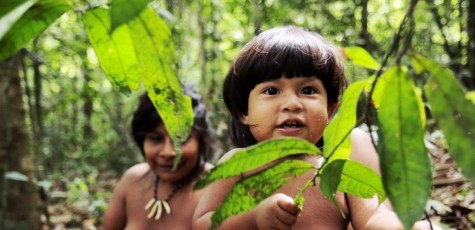


The Ngāti Awa people are primarily located in towns on the Rangitaiki Plain, including Whakatāne, Kawerau, Edgecumbe, Te Teko and Matatā. It is made of 22 hapū (subtribes), with 15,258 people claiming affiliation to the iwi in 2006.

Ngāti Awa is a Māori iwi (tribe) centred in the eastern Bay of Plenty Region of New Zealand. Very skilled in the art of hunting and fishing, he went out daily in search of food for his family,” she says.Pūtauaki, ancestral mountain of Ngāti Awa.

A great sage of ancestral knowledge about Awá.
#Awa tribe land hectares bacanga full#
“Karapiru was full of peace, without malice, smiling, very friendly, receptive to everyone, soft-spoken. Madalena Borges from CIMI also knew him well. Karapiru’s life was the subject of an award-winning documentary in 2006, by the Italian-born director Andrea Tonacci, called Serras da Desordem. What an extraordinary human being, to be able to sort of forgive people in a way and to be able to carry on your life.” “He started talking and smiling, and I thought how is he not more traumatised? He knew I wasn’t, he had no rancour, no bitterness. I hope it won’t be like in my time Karapiru Awá Guajá I hope the same things that happened to me won’t happen to my daughter. “He spoke so quietly, he whispered, that really struck me because I thought, of course, he’s had to become invisible in order to survive. “I just thought I cannot believe this man survived on his own for 10 years, not speaking to anybody,” she says. Photograph: Bonnie Jo Mount/The Washington Post/Gettyįiona Watson, research director at Survival International, first met Karapiru in 1992. Their survival has been threatened by logging, mining and a 900km railway running close to their land. Also, an example of how resilient we can be in the most extreme situations.” “Karapiru, in my view, represents the best that a human being can become, due to his friendliness and tranquility. He liked to hug people, which is not a common Awá attitude towards non-indigenous people, and he often watched my work with other Awá from a distance, always smiling when I looked at him,” says Magalhães. “He was one of the kindest people I’ve ever met. In Tiracambu alone, at least 12 Awás tested positive for Covid after the protests. Villagers believed it was safe to meet during the protests, including with people from other ethnicities, because they had been vaccinated. When he returned to Tiracambu, the village was protesting against a government bill that limited the demarcation of new indigenous land. Magalhães says Karapiru’s relatives told her he had gone to another village in the months before his death to visit his son, Tamata. Marina Magalhães, a linguist studying the Awá language, became friends with Karapiru after they met in 2001. I had no family to help me, to talk to Karapiru Awá Guajá He died in a hospital in Santa Inês in Maranhão and was buried in the municipality of Zé Doca, against the wishes of his friends, who wanted to bury him on Awá land. The Indigenist Missionary Council (CIMI), a Catholic NGO working with indigenous peoples, reported his death as “a victim of Covid-19”, despite him having had the Covid vaccine. Karapiru was estimated to be 75 when he died. Many have had no contact with the outside world. Skilled archers, the Awá live scattered in family groups over a large area, and travel at night using torches made from tree resin. The scale of the mining development gouged from the Amazon is such that it can be seen from space. The 2km long trains on a 900km railway built through the forest in the 1980s pass just metres from Awá territory on their way to one of the world’s largest iron ore mines. Photograph: Uirá Garcia/Survival InternationalĪwá lands have been under attack since the discovery of iron ore in the late 1960s. Awá villagers on a road built illegally by loggers through indigenous land in Maranhão state.


 0 kommentar(er)
0 kommentar(er)
